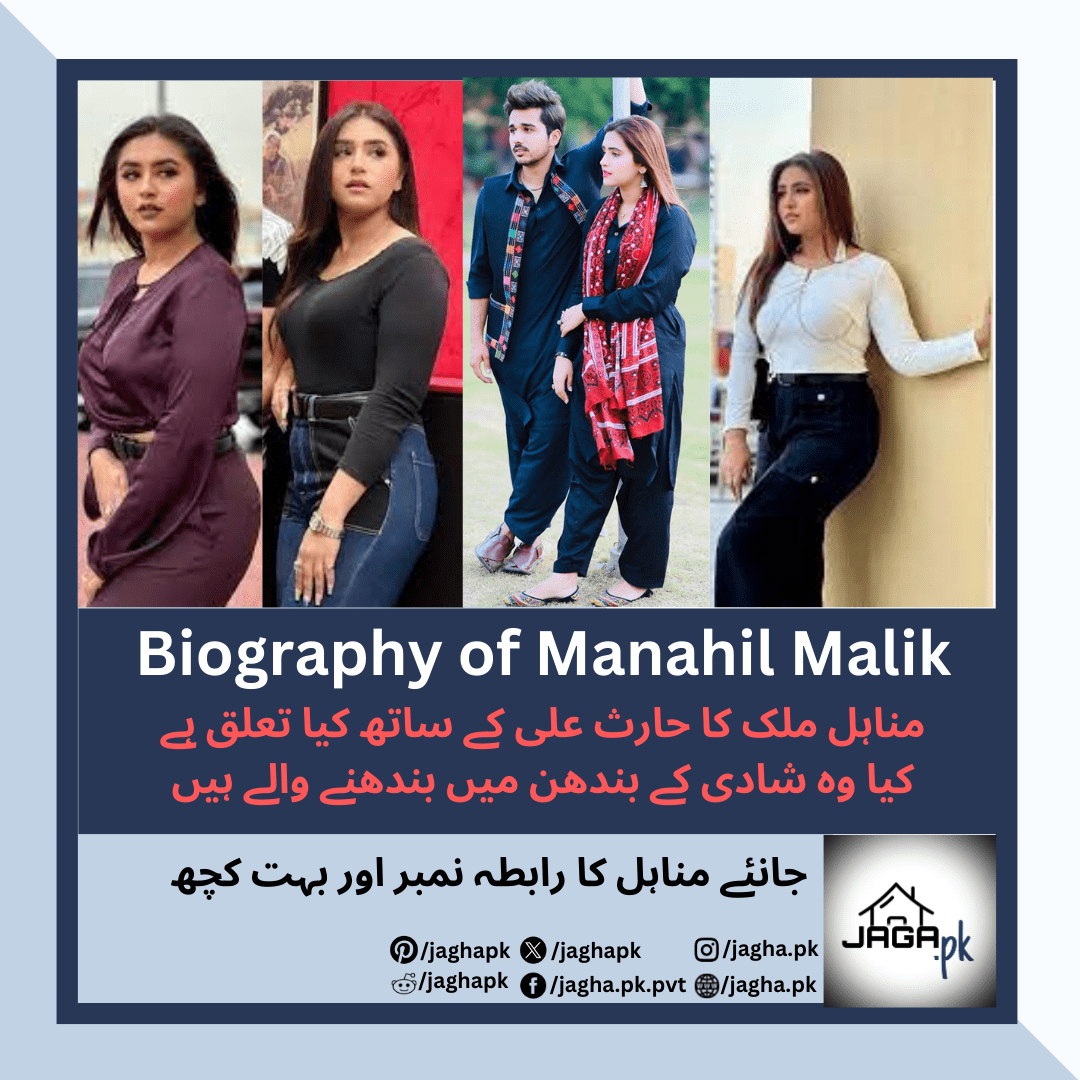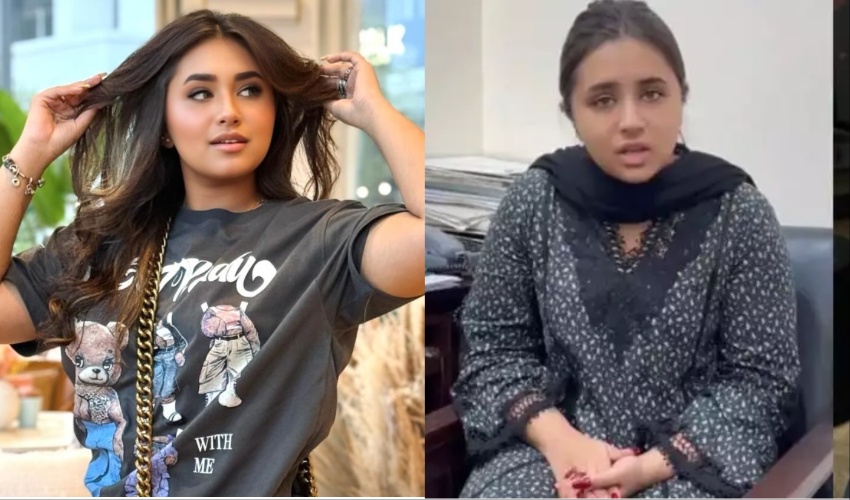Is it possible for a digital footprint to forever alter the narrative of a public figure, particularly in the age of viral content and instantaneous dissemination of information? The recent controversy surrounding Pakistani TikTok star Manahil Malik highlights the devastating potential of online misinformation and the subsequent impact on an individual's reputation and well-being.
The digital realm, once envisioned as a boundless space for connection and expression, has unfortunately become a breeding ground for malicious intent, where fabricated content can swiftly gain traction, causing irreparable harm. This phenomenon underscores the critical need for media literacy and a discerning approach to online information, particularly when dealing with sensitive topics involving individuals' personal lives. In the context of Manahil Malik, the situation reveals a complex intersection of online harassment, privacy violations, and the challenges of managing a public image in an environment often driven by sensationalism.
| Category | Details |
|---|---|
| Name | Manahil Malik |
| Profession | TikTok Star, Content Creator |
| Nationality | Pakistani |
| Known for | Presence on TikTok, popularity on social media. |
| Controversy | Alleged leaked video, claims of fake content and misinformation |
| Response | Denial of authenticity, complaint to authorities. |
| Social Media Presence | Active on TikTok and other social media platforms (details not specified in the provided text). |
| Public Reaction | Intense trolling, claims of a publicity stunt, significant social media stir. |
| Authentic website Link | It is not possible to provide an authentic website link, because of the sensitive and personal nature of the topic, and because the provided information does not contain links to any authentic websites. |
The controversy unfolded when an alleged intimate video featuring Manahil Malik circulated online. The emergence of the video immediately sparked a maelstrom of reactions. The content quickly spread across various social media platforms, including those known for hosting explicit content. The incident initiated a wave of intense trolling, and the comments ranged from crude and vulgar remarks to speculative accusations about the authenticity of the video. Some users even suggested the event was a calculated publicity stunt, designed to boost Malik's online presence, despite the complete lack of evidence to support this claim. These assertions, often made with little or no evidence, amplified the negative impact of the situation, further exacerbating the emotional and reputational damage.
In response to the escalating online furor, Manahil Malik issued a strong denial. In a video message that quickly gained traction, she categorically stated that the circulating content was fake and edited, designed to mislead and harm. The denial was not an isolated statement; it was a direct confrontation with the misinformation and a plea for the truth to be acknowledged. Her response also included a formal complaint lodged with the appropriate authorities, indicating her intent to pursue legal recourse against the creators and distributors of the fabricated content.
The aftermath of this incident highlights the profound impact of the digital landscape on individuals and their careers. The rapid spread of the alleged video, the immediate and often brutal reactions of online users, and the subsequent attempts to discredit Malik reveal the vulnerability of public figures to online harassment and misinformation. This case is not unique; similar scenarios have played out repeatedly, emphasizing the need for increased awareness of the dangers of online content.
The nature of the internet allows information to be disseminated in ways that were unimaginable before the digital age. The speed at which information can be spread makes it difficult to control or contain damaging content once it is released. This issue is compounded by the prevalence of platforms that prioritize engagement over accuracy. The algorithms employed by social media networks are designed to amplify content that attracts attention, often regardless of its truthfulness. This encourages the spread of sensationalistic content, which can significantly damage an individual's reputation, as was the case with Manahil Malik.
- 5 Movierulz 2024 Ndash Download Your Favorite Movies Safely And Legally
- Why Ullu Web Series Are The Ultimate Bingewatch Sensation
The repercussions of such incidents are far-reaching. They can negatively affect a person's mental and emotional well-being. The constant exposure to negative comments, the pressure to defend oneself against false accusations, and the loss of privacy can create a significant emotional toll. Furthermore, such events can have professional consequences, impacting opportunities, and potentially leading to the loss of income or professional partnerships. The fear of being associated with scandal or controversy can lead to further restrictions and challenges.
The case also casts a light on the dark underbelly of the internet, including the prevalence of illegal activities. Websites that host explicit content, often without proper verification or regard for the people involved, contribute to the problem. The availability of manipulated videos, often created through deepfake technology, complicates matters. The ease with which such content can be generated and spread highlights the urgency of technological advancements to protect individuals from malicious online actors.
The role of media outlets in covering these types of incidents must also be carefully considered. While reporting the news is essential, the methods and language used can either minimize harm or escalate it. Sensationalistic headlines and the framing of a story can further damage the reputation of the individual in question. Responsible journalism should prioritize accuracy, context, and the privacy of those involved. A balanced approach to reporting can help provide the public with the information they need while minimizing the potential for further harm.
In the case of Manahil Malik, the incident also highlights the broader issue of online privacy and the need for stronger safeguards. Social media platforms and online service providers have a responsibility to protect their users from abuse and the spread of malicious content. This includes implementing effective reporting mechanisms, actively monitoring content, and enforcing policies against harassment and the distribution of non-consensual intimate images. As technology advances, so must the measures to protect personal information and privacy.
Beyond the immediate consequences of online harassment and misinformation, the incident raises questions about the long-term impact on individuals and their careers. The digital footprint, once created, can be difficult to erase. Even if the circulating content is proven false, the narrative can be difficult to fully reverse. The internet's archive is comprehensive, and the spread of information makes the removal of damaging content an arduous task. This is particularly true when dealing with content that violates the individual's privacy and personal boundaries.
In this particular instance, the focus of some search results leads to platforms known for hosting adult content. This unfortunate consequence underlines the complexity of the situation. It highlights the way in which the scandal has potentially been exploited and used for the purpose of attracting traffic to explicit platforms. Furthermore, the repeated appearance of search results related to the alleged video contributes to the ongoing cycle of publicizing and amplifying harmful content. This shows the crucial need for platforms to establish clear ethical guidelines and work to combat the misuse of content.
The incident surrounding Manahil Malik serves as a stark reminder of the responsibilities that come with using digital platforms and the critical importance of being vigilant regarding online content. The incident illustrates the importance of digital literacy. Users must learn to critically evaluate information, recognize potential misinformation, and practice ethical behavior when engaging with online content. The ability to distinguish between what is accurate and what is fabricated has never been more important.
The widespread circulation of fabricated videos underscores the power of the internet to amplify harmful content, as well as the need for more sophisticated technological tools. The use of deepfake technology and other advanced techniques makes it increasingly challenging to identify and combat misinformation. There is a need for tools and platforms to improve the accuracy and security of information. This includes incorporating verification mechanisms, implementing better content moderation policies, and providing users with tools to report and flag potentially harmful content.
The legal and regulatory frameworks surrounding online content are also critical. Laws must keep pace with the ever-evolving technological landscape. This includes the need for stricter regulations against online harassment, the distribution of non-consensual intimate images, and the creation of manipulated content. Moreover, it involves the enforcement of existing laws, as well as improved international collaboration to address online threats.
The case of Manahil Malik is not unique. It highlights a pattern of behavior that underscores the need for education, awareness, and a shared commitment to ethical behavior. The key is to create a safer, more responsible digital environment that protects individuals from harm and promotes the truth. It calls for a collective effort from social media platforms, media outlets, technology providers, and society as a whole to ensure that the internet is a safe, inclusive, and reliable space.
The events relating to Manahil Malik reveal the complex challenges and the critical need to address them. It highlights the need for a more responsible and safer online environment.
In conclusion, the events surrounding Manahil Malik serve as a compelling reminder of the power and perils of the digital age. It reinforces the urgent need for critical media literacy, robust digital protection measures, ethical online conduct, and proactive legal frameworks. This specific incident, although unfortunate, also provides a learning opportunity for both individuals and society. It emphasizes the importance of working together to foster a more compassionate, transparent, and secure digital environment for everyone.



Detail Author:
- Name : Prof. Willy Crist
- Username : wgrant
- Email : rempel.marcel@pfannerstill.org
- Birthdate : 1998-12-09
- Address : 9060 Carol Knoll Kimshire, NH 90028-7155
- Phone : 469-473-6702
- Company : Rice-Hoppe
- Job : Tire Builder
- Bio : Qui et rem officiis quae sit porro. Ullam omnis non esse doloribus autem ut. Aut qui aut suscipit libero porro officiis illo.
Socials
tiktok:
- url : https://tiktok.com/@enoch_christiansen
- username : enoch_christiansen
- bio : Reiciendis consequatur ad minus corrupti.
- followers : 1328
- following : 1464
linkedin:
- url : https://linkedin.com/in/christiansene
- username : christiansene
- bio : Et harum molestias magni ipsam.
- followers : 4689
- following : 626
instagram:
- url : https://instagram.com/enochchristiansen
- username : enochchristiansen
- bio : Est consectetur architecto recusandae voluptatem. Sunt cum repellendus quo magnam mollitia non.
- followers : 1547
- following : 1196
twitter:
- url : https://twitter.com/enochchristiansen
- username : enochchristiansen
- bio : Laboriosam non sint veritatis facere aperiam. Molestias autem dolorum necessitatibus temporibus ipsam.
- followers : 6302
- following : 2679